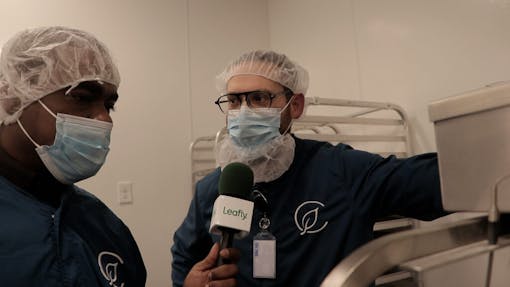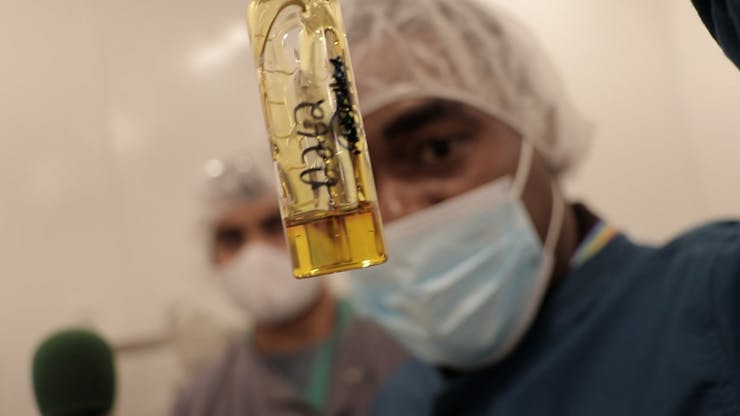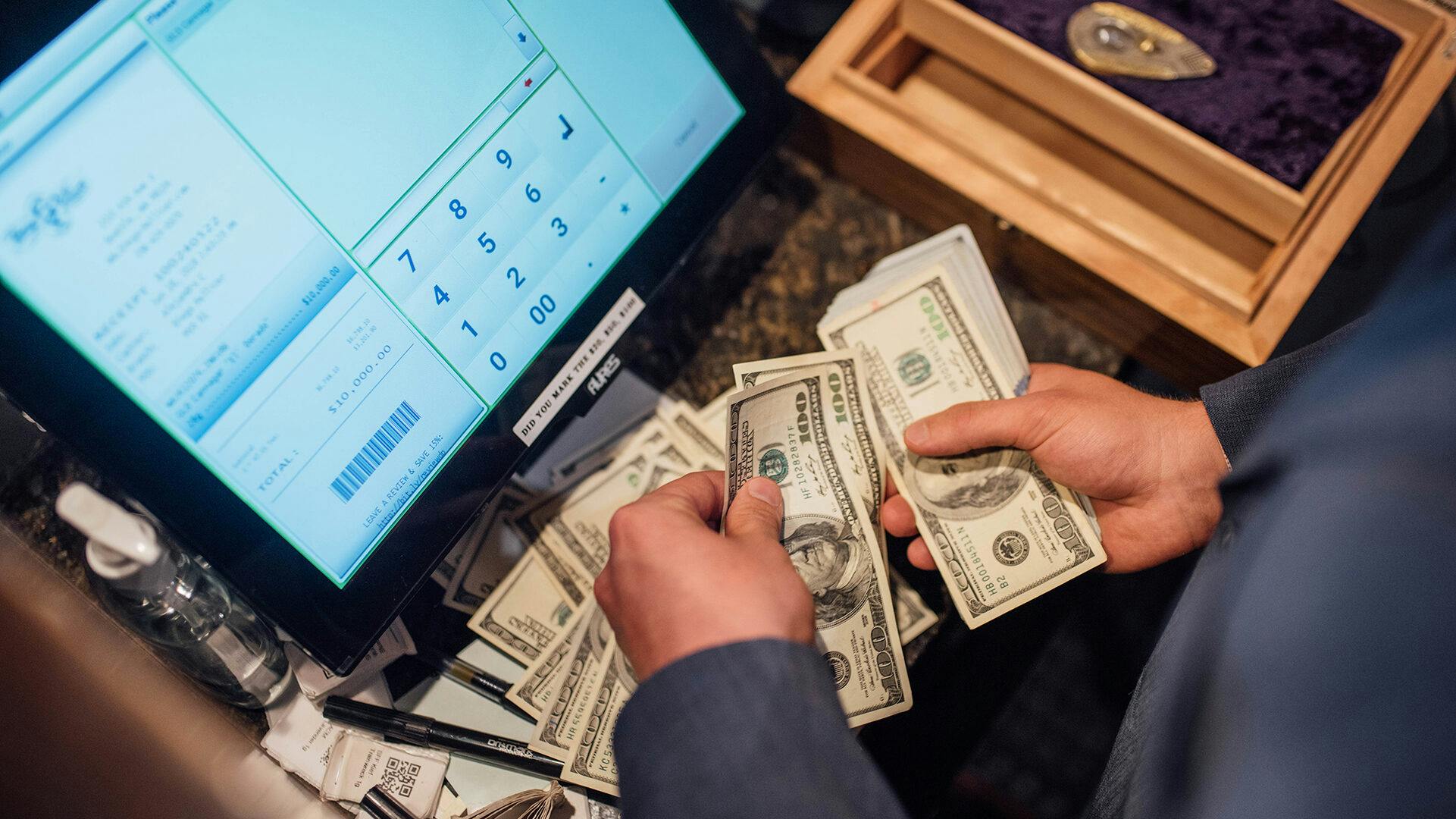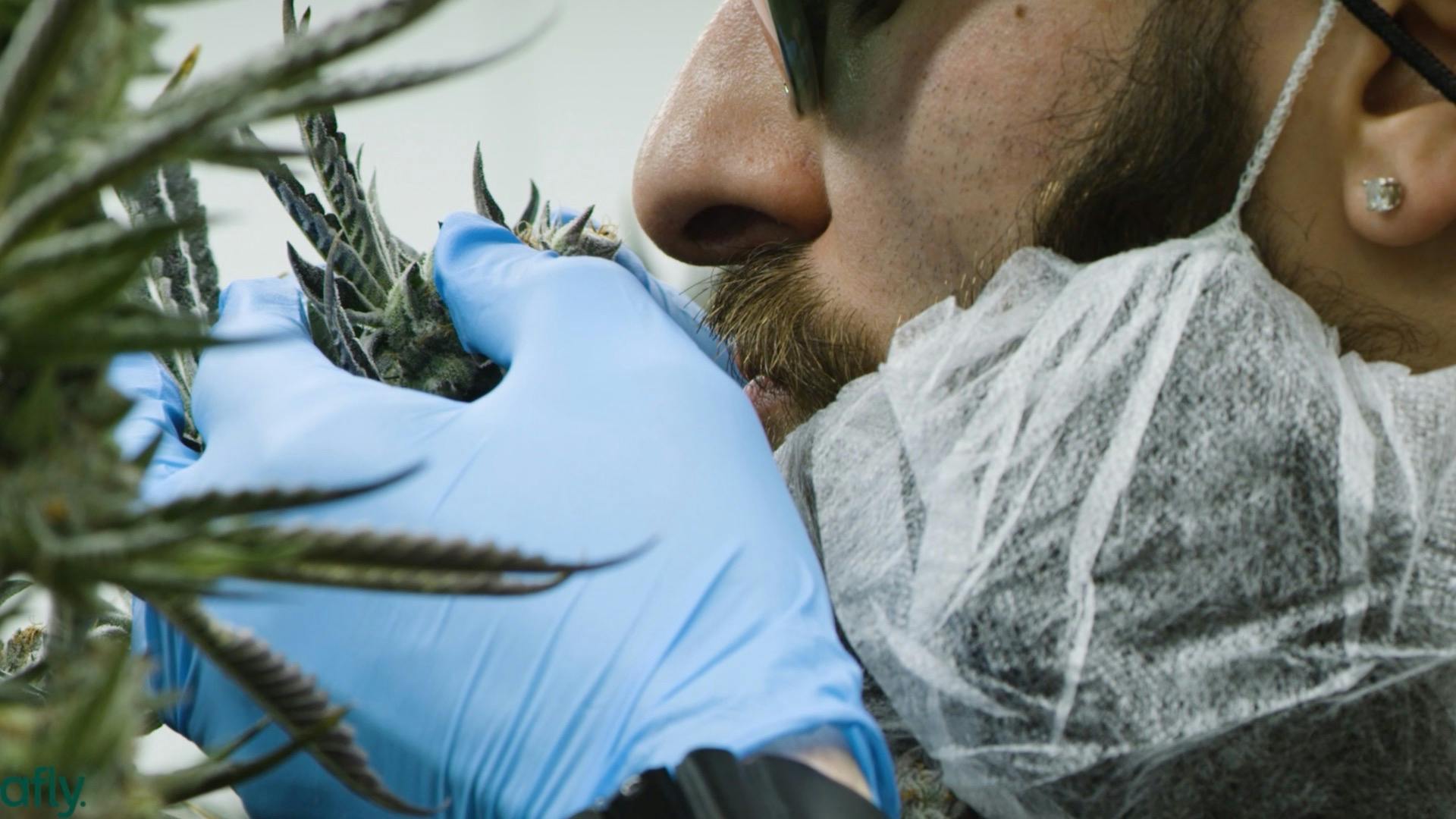Meet the NJ cultivators for Curaleaf, the world’s biggest cannabis company. Their facility cares for 56,000 plants at a time while pumping out 8,000 carts and 72,000 gummies a day.
Curaleaf has legal operations in more than half of the 37 states that allow either medical or adult-use cannabis. Their 137 dispensaries are supported by 26 cultivation factories, including the Winslow, NJ facility they invited me to this summer.
Curaleaf’s grow-ops produce the world’s largest inventory of legal cannabis for both wholesale buyers and Curaleaf’s own retail shops. With weed sales booming across NJ, we visited the state’s biggest grow facility to see how plants go from seed to sale on such a massive scale.
Here’s your golden ticket inside Curaleaf’s 120,000-square-foot *Willy Wonka weed factory. Keep reading to see how the world’s leader in legal bud is keeping pace with historically-high demand during New Jersey’s first year of adult-use cannabis.
*No children were turned into Blueberry Kush in the making of this story

One bad mother room
“From seed to sale, we’re probably somewhere in the four to five month range, depending on how long we leave stuff in a curing state,” Maura Reilly told me as we toured the facility. Maura (aka Mo) is the NJ Director of Cultivation for Curaleaf.
As Mo took me through the main hallway, the combined funk of 11 flower rooms punched me in the nose. At any given time, these rooms can be home to 56,000 plants.
At the end of the long flower hall is the mother room, which houses one or two harvest per week. In the mom room, 40 or so of Curaleaf’s current and upcoming strains come to life. Some strains are out of production, but are being archived for future use.
Nursing clones in the prop room
After employees clip new plants in the mom room, next up is the nursery. There, fresh clippings from the mom room get rooted in domed trays, 50-at-a-time . The domes act as greenhouses that trap humidity to promote growth.
After about two weeks, the foggy domes fill up with rooted plants that are slowly vented then uncovered to harden. Then they’re dipped in nutrient-dense water (baby formula for widdle weeds). This rooting process takes anywhere from 2-3 weeks. Then we’re headed to the veg room.
Veging out with good vibrations
Marky Mark wasn’t playing on the speakers when I entered the vegetative room. But good vibrations were in the air with speakers blasting an eclectic mix of tunes. There was even a karaoke mic in case growers wanted to serenade their offspring.
In the veg room, plants are moved into large volume containers and rooted for about 3-4 weeks. During the loud cultivation process, growers play everything from Adele to electronic dance music.
The music keeps the triple-tiered rows of potted plants entertained as they sip on automated irrigation drips that resemble the white wires on Apple charging accessories. The dripper system keeps the plants saturated after they take root.
At any given time, this veg room houses about half of the facility’s 56,000 plants. With that big of a crowd, a diverse playlist is a must.

“Sometimes it makes me laugh when I go from one room to another hearing, the different stuff that people have on,” Mo told me as we floated between rooms.
After about four weeks of jamming out to different genres, the fully-vegetated plants move on to replace retired mothers in the mom room, or to join the next production batch in the flower rooms.
Flower rooms are where the plants go to mature. They spend about two or three months there before harvest.
Next, growers slowly taper the plants off of nitrogen and lower the temperature. This mimics fall weather, allowing plants to cool off and regain the deep purple tones that sometimes fade in the heat. Now it’s time to de-leaf and dry.
Dry room diaries
After de-leafing, one branch is cut off of each plant to create a small hook. That hook comes in handy in the dry room, where loads of plants hang like wet laundry. The drying veggies resemble sleeping bats as their clawed stems grip the sanitized metal racks.




In the dry room, we admired some freshly-cut Slurricane, a favorite strain among New Jersey smokers. In here, plants are scheduled to sit for about 7-10 days, or until the water activity is just right. Then a sample goes to the lab to confirm that each batch is up to snuff.
Packing in the pounds
After being dried, trimmed, and tested, buds come into the flower packaging room. Here, 7,000 units a day are packed, thanks in part to a state-of-the-art machine that Shannon considers “a game-changer.”
One employee feeds a jumbo pot full of state-approved pot into the machine from upstairs. Downstairs, teammates seal the packages with a cap and sticker label.


After every 25 units are packed, a hand-weighed quality control check occurs to make sure the machine is stuffing accurately. Shannon says that an automated capping-machine is on the way soon.
Curaleaf’s quality control measures
According to the cultivation team, every adjustment to lighting, hydration, and temperature is meant to maintain homeostasis in the plants. The hyper-controlled environment lets growers quickly tweak batches for both medical and adult-use products.
To charge these babies up, Curaleaf uses high-pressure sodium lights (HPS) that shoot fat photons of energy. The high-intensity bulbs produce the same powerful beams that are behind street lights and security lighting, giving off a dim orange glow.
Like many growers, Curaleaf plans the controlled release of “beneficial bugs,” which eat away at intruders while a team of specialists monitor the cleanliness of each plant. These mighty mites are part of a rigorous and robust IPDM program (integrated pest and disease management) that keeps Curaleaf in good standing with the state.
Sachets filled with these buggers hang off of stems as a preventative measure. “If there are any (insects that) somehow get into the grow, we’ve already got an established population of predatory mites to take care of that issue,” Mo explained.
The gummy factory

So what goes into making NJ’s largest supply of legal edibles? “Blood, sweat, and tears,” according to the gummy team. They mix and mold 63,000 to 72,000 gummies per day.
While I watched Kyle, one of the cooks, add flavors and covering to Strawberry Peach gummies, I really felt like I was in Wonka’s factory.
The scattered assembly line of professionals take their globby mix of glucose, gelatin base, and THC (aka “the charge”) and stir it up using state-of-the-art manufacturing equipment.
The main mixers can spin out enough goo to make 9,700 gummies per batch. The chefs who operate the machines then deposit their fully-charged oil into molds, which a process that takes about 20 minutes start to complete.
The team has the process down to an exact science, to keep both their customers, and the New Jersey Cannabis Regulatory Commission (CRC) happy. “New Jersey is very strict,” one Curaleaf cook told me.
Next, the square molds hit the cooling room for two hours on perfectly assorted trays. They only make one flavor per day for maximum efficiency.
After the 10 MG gummies are popped onto cure trays, they do a 48-hour cure while samples are tested. Then each batch is scraped into a bin, labeled, and sent to packaging.

Edibles aren’t the only product made from the THC-infused goop. To generate thousands of carts per day, team members use a credence filler capper. These automated liquid filling machines squeeze out perfectly-concentrated carts.
Employees fill a carousel, then the machine is calibrated to cap the carts. Next, employees seal the fresh carts in a bag and send them on their way.
These line’s pack 4,000 units in an 8-hour day. The final products include THC tinctures, carts and medicated gummies. And they’re planning to double the number of machines running in Winslow soon.
Meeting the master cultivators

This facility employs over 170 people. Curaleaf workers switch rotations in shifts, cycling duties so that everyone gains an expertise in the process. But how does one secure a dream job in the Wonka factory of weed?
“I started in 2014 in the legal medical market in Connecticut,” Mo said. The location’s lead cultivator has been growing plants all her life, including pot in high school.
She took an even greater interest after the plant helped her battle cancer. Mo said she credits cannabis with keeping her alive to this day.
What stood out to me most about my visit, was I didn’t see anyone who seemed unhappy to be at work. No matter what place of business you enter these days, that level of morale is rare.
Shannon Thompson, Senior Director of Operations, came to Curaleaf from the Department of Defense, after years spent working for Apple. The combination of retail and operations background is key in keeping the state’s largest licensed facility on the up and up.

“NJ’s (cannabis market) is exploding as everyone knows, and we’re really excited to be a part of that,” Shannon told me. ”We’ve got New York and Connecticut coming soon to the adult-use market, so we’re excited to have them onboard.”
High science in the extraction lab
In the extraction lab, rad scientists like Nelson oversee the complex extraction process. Nelson takes flower and extracts THC, CBD, oils and waxes using high-pressure and high-temperature machines. The 3-hour process turns 4 kilograms of cannabis into 1 kilogram of crude material.
In total, it takes 3 days to go from flower to ready-made distillate that can go into Curaleaf products. Recycled ethanol helps isolate waxes and oils that are non-soluble. Then the wax is filtered through paper and pumped into an evaporation station. Finally, it decarbs in the oven and gets distilled.
Meanwhile, the scientists in the analytics lab are responsible for testing samples. They run tests by soaking their specimen in HPLC water. Then they use heat to melt it down, shake it up, and add extraction solution. It takes about 6 hours to test 80 samples. One major hold up is that it takes about an hour just for the gummies to melt.
After batches are approved they’re sent to packaging, where flower and distillate products are bagged in bulk and tossed into plastic tubs in the green vault. In the vault, edibles, carts and cartons of flower wait patiently in these boxes to be shipped out to retailers across the state.
Final thoughts from New Jersey’s biggest grow-op

Reflecting on Curaleaf’s catchphrase, “Cannabis with confidence,” I can see why they’re so sure of their products. Every step of the process is planned and executed with precision.
When I met former Curaleaf CEO Joe Bayern this April on NJ’s first day of legal weed sales, I didn’t stop to think about how many people were working behind the scenes to put products on the shelves.
As a legacy advocate and operator for most of my life, I like to think I helped pave the way for mega-operations like Curaleaf to set up shop in my home state. With hundreds of micro businesses preparing to join the legal market by 2023, Curaleaf will need to stay on point to keep their lead as the world’s largest pot provider against the growing field of challengers.
Speaking of which. Now that you know how they do it, why not get a license and give them a run for their money? Leafly Learn has the latest grow science for experts and beginners.
Cultivate with confidence.









